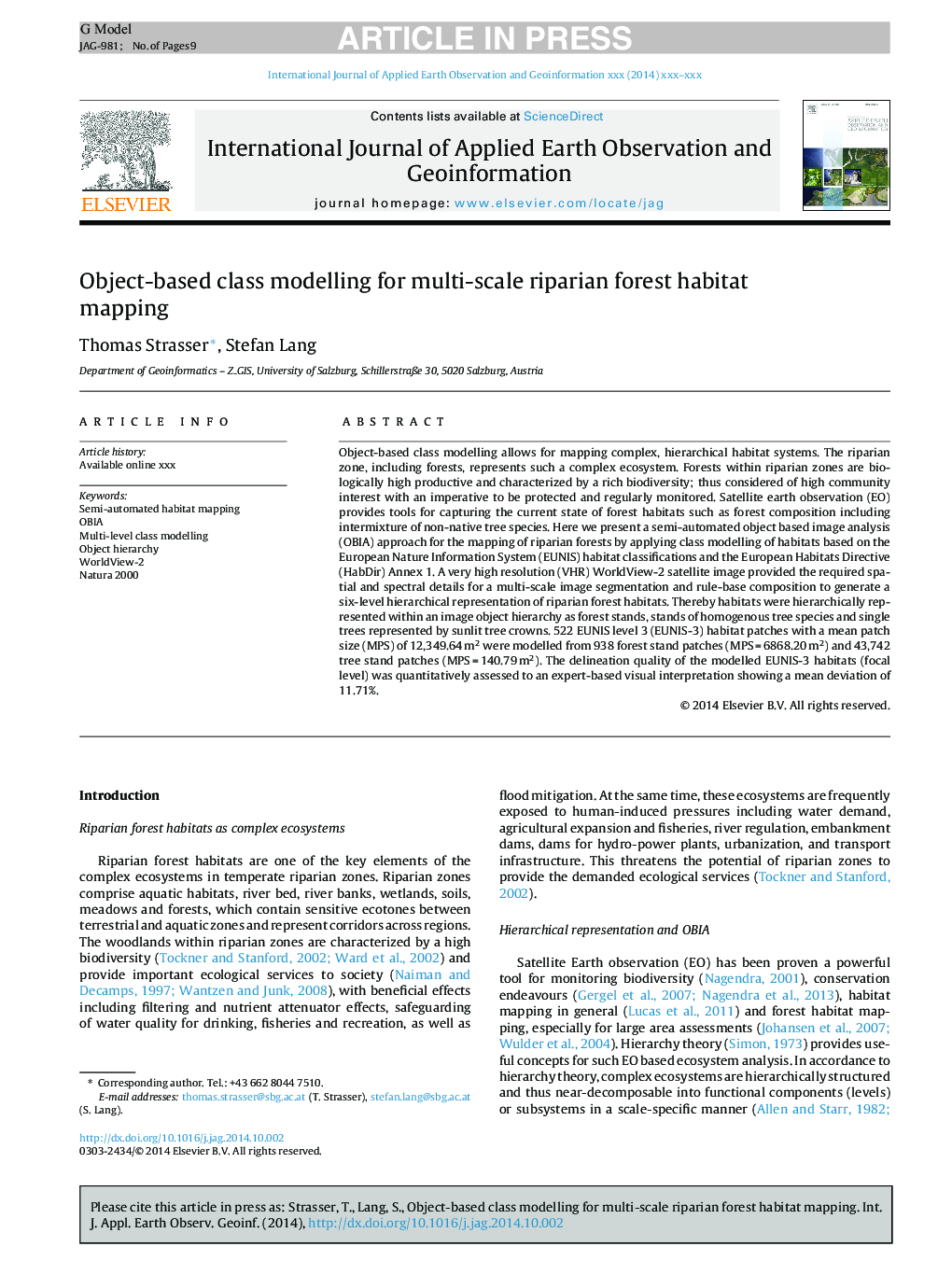| Article ID | Journal | Published Year | Pages | File Type |
|---|---|---|---|---|
| 6348773 | International Journal of Applied Earth Observation and Geoinformation | 2015 | 9 Pages |
Abstract
Object-based class modelling allows for mapping complex, hierarchical habitat systems. The riparian zone, including forests, represents such a complex ecosystem. Forests within riparian zones are biologically high productive and characterized by a rich biodiversity; thus considered of high community interest with an imperative to be protected and regularly monitored. Satellite earth observation (EO) provides tools for capturing the current state of forest habitats such as forest composition including intermixture of non-native tree species. Here we present a semi-automated object based image analysis (OBIA) approach for the mapping of riparian forests by applying class modelling of habitats based on the European Nature Information System (EUNIS) habitat classifications and the European Habitats Directive (HabDir) Annex 1. A very high resolution (VHR) WorldView-2 satellite image provided the required spatial and spectral details for a multi-scale image segmentation and rule-base composition to generate a six-level hierarchical representation of riparian forest habitats. Thereby habitats were hierarchically represented within an image object hierarchy as forest stands, stands of homogenous tree species and single trees represented by sunlit tree crowns. 522 EUNIS level 3 (EUNIS-3) habitat patches with a mean patch size (MPS) of 12,349.64Â m2 were modelled from 938 forest stand patches (MPSÂ =Â 6868.20Â m2) and 43,742 tree stand patches (MPSÂ =Â 140.79Â m2). The delineation quality of the modelled EUNIS-3 habitats (focal level) was quantitatively assessed to an expert-based visual interpretation showing a mean deviation of 11.71%.
Keywords
Related Topics
Physical Sciences and Engineering
Earth and Planetary Sciences
Computers in Earth Sciences
Authors
Thomas Strasser, Stefan Lang,
